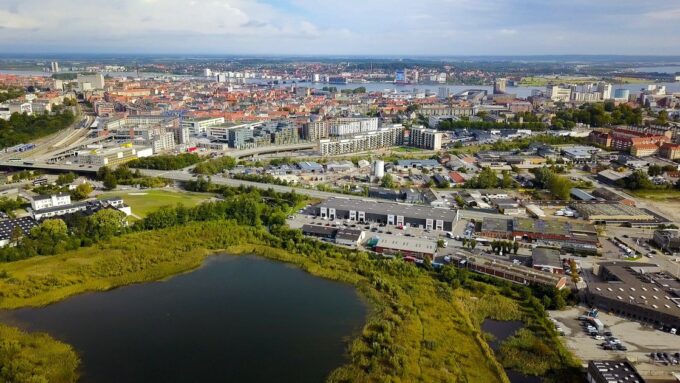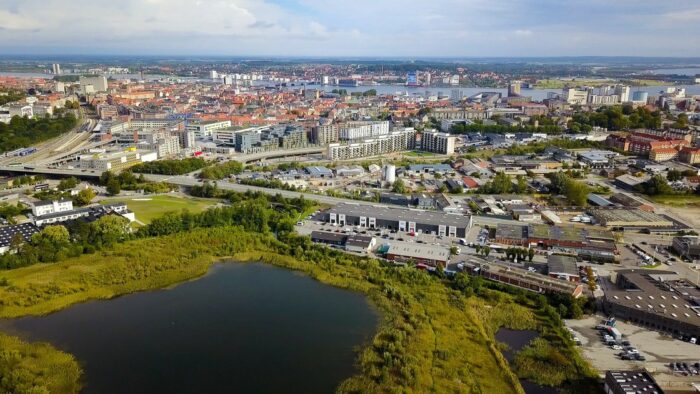

Urbanization has resulted in certain lifestyle changes, one example of which is the large number of people who congregate in urban centers. Urban centers become potential places for entertainment, education, financial, and social needs. To respond well to urbanization trends, the concept of a sustainable urban environment is one of the solutions.
About Sustainable Urban
Although urbanization is growing well, it is also accompanied by a large number of slums and threatened environmental quality. Such cases are more common in developing countries, which calls for a sustainable approach to city management. A sustainable city means a city with sufficient socio-economic potential and, and safe environment.
To support sustainable cities, it is necessary to develop infrastructure and resources with environmental quality in mind. Various smart strategies are needed so that infrastructure can provide optimal performance without threatening the environment. Efficient transportation management is also needed with integrated transportation infrastructure.
Many other aspects need to be addressed to support a sustainable system in a city. Each sector can be intertwined in the concept of a sustainable city from economic, lifestyle, cultural, religious, and social factors. One of the aims of this sustainable approach is to provide a balanced ecosystem for a more positive community life.
What are the Challenges of Sustainable Urban?
A sustainable environment means that residents can perform their activities optimally while not harming the surrounding environment as well. While sustainable neighborhoods are necessary for busy and crowded cities, certain challenges must be faced.
– Rapid Urbanization
In some countries, the pace of urbanization is hard to keep up with because it is so fast. As migration to urban areas becomes more intense, the city must adapt to the demands of the city. Cities that become migration destinations must be able to provide adequate infrastructure in terms of public services, housing, and so on.
Without proper management, developments may overlap with each other. The high demand for cities can increase the pressure on resources, and cities cannot be planned as optimally as before due to high demands.
Due to the rapid pace of migration to cities, efforts to focus on green approaches may be compromised.
Read also : 5G Implementation: Benefits, Opportunities, and Challenges
– Limited Adequate Resources
The unavailability of adequate resources can also be an obstacle to supporting a sustainable city. To keep up with the demands of a migrating population, it is necessary to meet the demand for adequate raw materials and energy. But often the demand exceeds the capacity of available resources.
To reach the level of sustainability, it is necessary to balance the preservation of resources and the fulfillment of population needs. To anticipate such unbalanced living patterns, cities usually take an advanced and innovative technological approach.
One such approach is renewable energy as a solution. It is important to utilize existing technologies to overcome the challenges of a sustainable city.
– Socio-Economic Disparities
Some areas may have inclusivity issues. Unequal access for every class of people does not signify enough sustainable values. Therefore, another challenge of a sustainable city is socio-economic inequality.
The problem of community inequality can be seen in access to public services, health, education, employment opportunities, and so on. The development of the city makes government programs and policies that may benefit certain segments.
Therefore, it is necessary to plan policies that can be fair to each segment. Similar to the other challenges, socio-economic disparities tend to be found in developing countries.
– Environmental Threats
The threat of environmental degradation can increase the level of the city’s sustainability challenges. Rising temperatures, intense pollution levels, and other extreme weather phenomena can reduce the well-being of city residents. Transportation systems need to be well-managed to reduce vehicle levels, and low-carbon approaches are possible.
Sustainable Urban Strategies
To overcome these challenges, a comprehensive and effective strategy is needed. It can start from planning city management through a sustainable approach, utilizing the implementation of advanced technology for efficient purposes, and so on. The community must also be involved to create the expected results.
There are times when certain policies need to be modified to overcome the obstacles to sustainable cities. Urban planning should focus on the above challenges, so it is necessary to consider the concept of mixed development. Land use should be well managed to make it more efficient.
Other strategies from bellevuecn.com to consider include the following:
– Transportation Infrastructure Management
To reduce the number of vehicles used, better transportation management is needed. Public transportation should be easily accessible to anyone who needs it. With the development of public transportation, it can reduce pollution levels as well as congestion. Less vehicle use means lower carbon levels in the environment, which is in line with the concept of sustainability.
– Zoning Regulations
Prioritizing zoning regulations is equally important. Make sure pedestrian paths and bicycle lanes are well provided so that people can have a healthy lifestyle. They can also contribute to protecting their environment. To enhance this, it is also necessary to prioritize the opening of green spaces to further make the environment healthier.
– Technology Integration
The implementation of certain advanced technologies can support sustainable efforts for urban areas while adapting to modern lifestyles. A city needs to consider the implementation of a ‘Smart City’. Utilizing IoT, or automation can make resource management more efficient.
The application of technology can be for various aspects such as waste management, renewable energy source devices, and so on. Nowadays, there are more and more people who are tech-savvy so it can make real implementation easier.
Read also : Transforming Healthcare With Advanced AI Applications
– Sustainable Urban Counseling
Even though some people are already aware of the importance of sustainable systems in a city, there still needs to be an extension program to maximize the results. Extension can develop insights and knowledge about environmental issues, including how to make the city they live in more livable.
Outreach about sustainable cities should explain how to live well in the city and encourage daily environmental conservation actions. Sustainable urban outreach can be done through direct interaction or social media.
– Create Policies For Sustainable Programs
Creating a sustainable policy for a city requires a comprehensive design, and adequate funding as well. Sustainable policies should include urban environmental development, community justice, and beneficial programs. You can also set specific targets to achieve meaningful results.
Although it takes time, money, and effort, implementing sustainable cities can have a good impact on the future. A sustainable city approach can allow the environment to be well preserved, while at the same time improving the welfare of the community.
